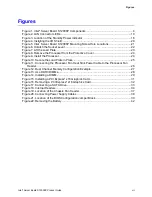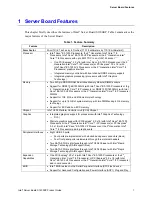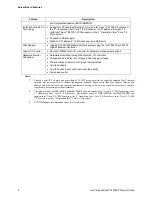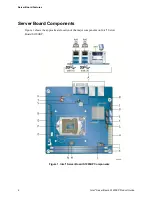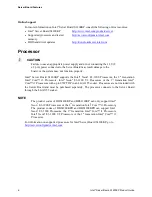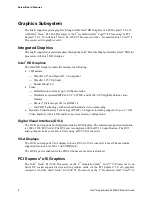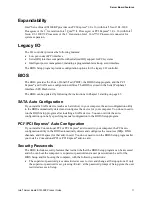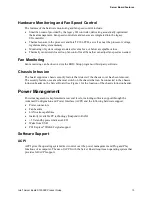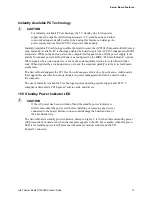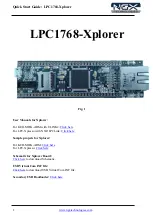
Server Board Features
Intel
®
Server Board S1200KP Product Guide
11
Expandability
Intel
®
Server Board S1200KP provides one PCI Express* 2.0 x16 (with Intel
®
Xeon
®
E3-1200
Processors or the 2
nd
Generation Intel
®
Core™ i3 Processors) or PCI Express* 3.0 x 16 (with Intel
®
Xeon
®
E3-1200 V2 Processors or the 3
rd
Generation Intel
®
Core™ i3 Processors) connector for
system expansion.
Legacy I/O
The I/O controller provides the following features:
Low pin count (LPC) interface
Serial IRQ interface compatible with serialized IRQ support for PCI systems
Intelligent power management, including a programmable wake-up event interface
The BIOS Setup program provides configuration options for the legacy I/O controller.
BIOS
The BIOS provides the Power-On Self-Test (POST), the BIOS Setup program, and the PCI
Express* and SATA auto-configuration utilities. The BIOS is stored in the Serial Peripheral
Interface (SPI) Flash device.
The BIOS can be updated by following the instructions in Chapter 3 starting on page 43.
SATA Auto Configuration
If you install a SATA device (such as a hard drive) in your computer, the auto-configuration utility
in the BIOS automatically detects and configures the device for your computer. You do not need to
run the BIOS Setup program after installing a SATA device. You can override the auto-
configuration options by specifying manual configuration in the BIOS Setup program.
PCI*/PCI Express* Auto Configuration
If you install a Conventional PCI or PCI Express* add-in card in your computer, the PCI auto-
configuration utility in the BIOS automatically detects and configures the resources (IRQs, DMA
channels, and I/O space) for that add-in card. You do not need to run the BIOS Setup program after
you install a Conventional PCI or PCI Express* add-in card.
Security Passwords
The BIOS includes security features that restrict whether the BIOS Setup program can be accessed
and who can boot the computer. A supervisor password and a user password can be set for the
BIOS Setup and for booting the computer, with the following restrictions:
The supervisor password gives unrestricted access to view and change all Setup options. If only
the supervisor password is set, pressing <Enter> at the password prompt of Setup gives the user
restricted access to Setup.


